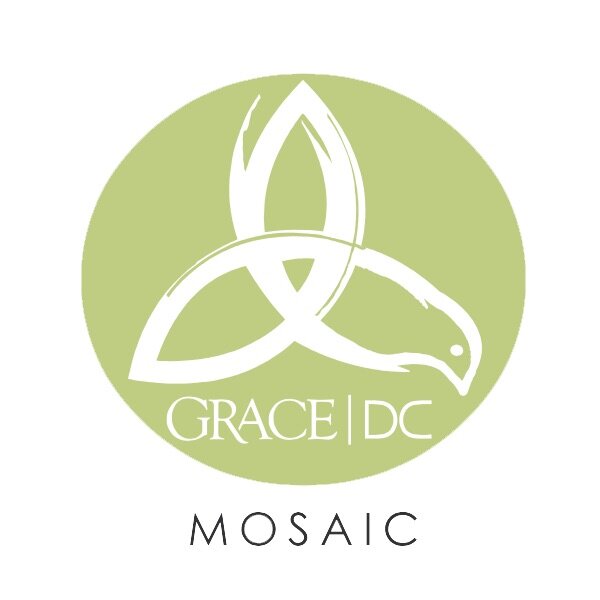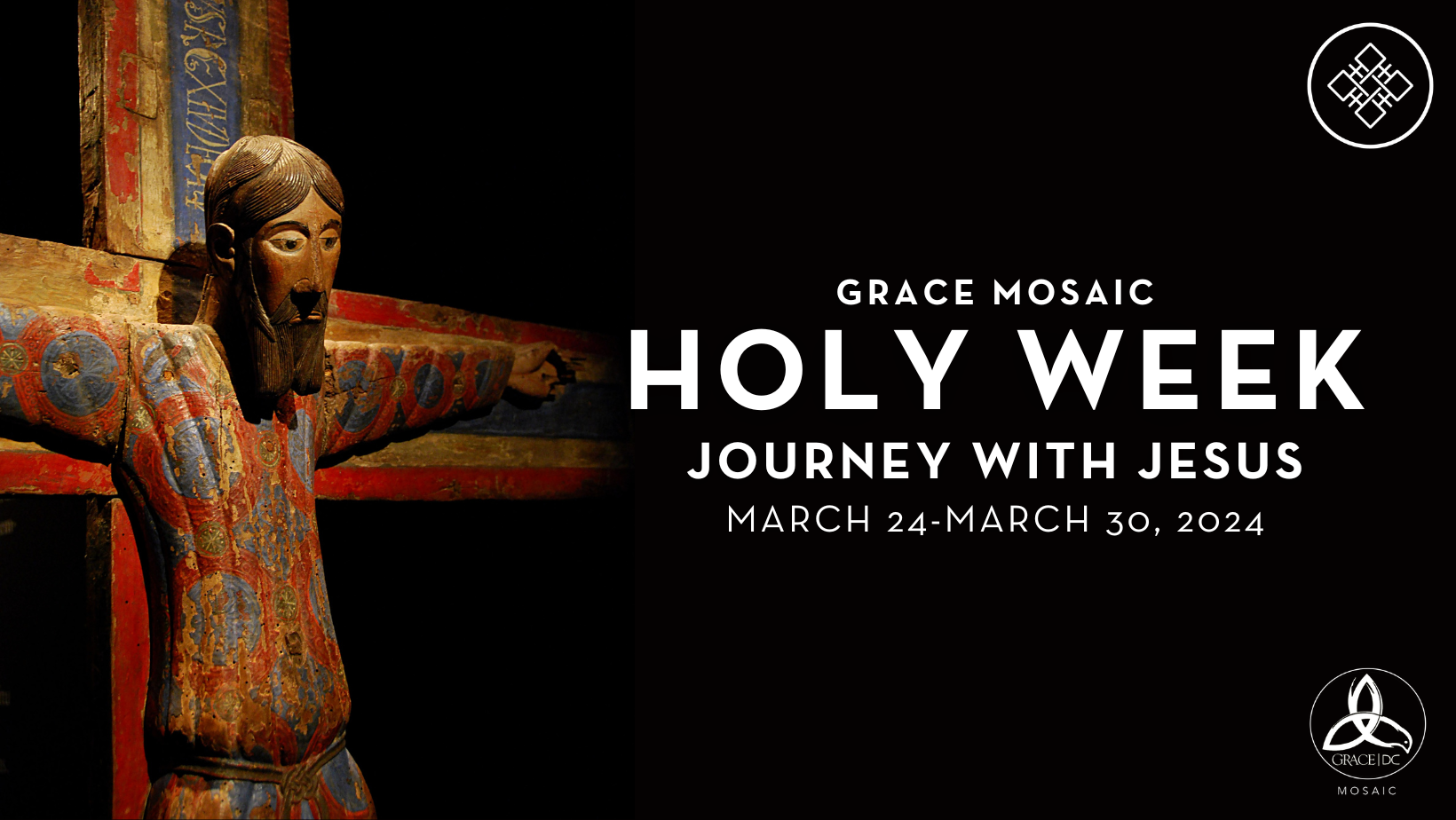Holy Week 2024
Holy Week 2024
Dates: Palm Sunday (March 24, 2024) - Holy Saturday (March 30, 2024)
Color: Purple
Icon: Our Lenten seasonal icon prominently features an Ethiopian cross, designed by Atlas Minor.
A Portrait of Holy Week
“For I decided to know nothing among you except Jesus Christ and him crucified.”
(1 Corinthians 2:2)
(The liturgical year is about) growing more embedded in the essentials of life as the years go by rather than simply moving from one time of life to the next. The liturgical year is an adventure in bringing the Christian life to fullness, the heart to alert, the soul to focus. It does not concern itself with the questions of how to make a living. It concerns itself with the questions of how to make a life.
I’m older now; I know better now. I know now that it is possible to grow physically older by the day but, at the same time, stay spiritually juvenile, if our lives are not directed by a schema far beyond the march of our planet around the sun.
The liturgical year is the process of slow, sure immersion in the life of Christ that, in the end, claims us, too, as heralds of that life ourselves.
Joan Chittister, The Liturgical Year
Dear sisters and brothers, the time of Holy Week is yet again upon us. This is the centerpiece of our annual cycle of worship together and represents the core of our faith: what we believe about God, ourselves, and the world, culminating in the life, death, and resurrection of the messiah Jesus Christ. As such, it is to be treated as holy, “set apart,” from other times within the calendar of our life together. This year, thanks to having more dedicated staff for spiritual formation at the church (thanks, Haley!), we are offering a more robust experience of the week together. Below you will find a calendar of the week, including new in-person prayer services, stations of the cross pilgrimages, daily newsletters, and more.
May we all enter into this week with reverence, sobriety, and joy as we experience anew the love of God shown to us through the passion of Christ.
-Written by Rev. Joel Littlepage
“A good spiritual life connects us to where we come from, even in the midst of where we are now. It gives us roots. It carries a tradition on its back. It ties us to the past in a way that enables us to know who we are in the present. That’s what Lent does for us. It’s about reaching back to remember who we are even while we keep on becoming more than we were.”
Holy Week Devotional Reflections
The Grace Mosaic staff has prepared daily reflections for Holy Week using readings and artwork from the Living Prayer Periodical.
Resources
Lent Living Prayer Periodical
The Daily Prayer Project is a publication ministry of Grace Mosaic that supplies a holistic resource for spiritual formation to thousands across North America and the globe. You can access the Lent Living Prayer Periodical outside the sanctuary on Sunday mornings, or here.
Stations of the Cross Booklet
In the Stations of the Cross, Christians all over the globe engage in a profound act of remembrance during Holy Week. Dating back to the early Christian community, this ancient practice is a pilgrimage in the Spirit to the "places" where Jesus suffered for us and our salvation. In the neighborhood that Grace Mosaic calls home—Brookland—we are blessed with a replica of the traditional processional route in Jerusalem, The Franciscan Monastery of the Holy Land at 14th & Quincy St. NE! On Wednesday, March 27 at Noon we will gather together in person at the monastery to meditate on the stations together. You can access the Stations of the Cross Booklet here.
Music for Holy Week
A Brief History of Holy Week
The early history of Holy Week, principally the the Triduum(pronounced trij-oo-um)-- Latin for “three days” (counted from sundown to sundown), consisting of Maundy Thursday, Good Friday, Holy Saturday, and Easter Sunday--is complex and varied, from East to West.
The common dominator is the connection to the Jewish feast of Passover (or Pasch, from the Greek verb “to suffer,” which eventually becomes known in English as the “passion”). Even in the writings of Paul, you see a clear connection between Passover of old and the new covenant:
For Christ, our Passover lamb, has been sacrificed. Let us therefore celebrate the festival, not with the old leaven, the leaven of malice and evil, but with the unleavened bread of sincerity and truth. (1 Corinthians 5:7–8)
The early foundations of the way we celebrate Holy Week are found within the liturgy of the ancient church of Jerusalem. A pilgrim named Egeria (mostly likely from Spain) came to Jerusalem sometime between the years 381-384 A.D. and kept a very detailed diary of her experience worshipping with the Christians of Jerusalem. She recounted the following testimony:
The churches gathered on Thursday evening to celebrate the Lord’s Supper and then kept an all-night vigil until dawn(!).
During that vigil, they ventured to the Garden Gethsemane and, at Dawn, walked back to Golgotha, the supposed location of the Crucifixion.
They took a break until 8 AM. Then, with more readings, hymns, and psalms, they continued to worship from noon to 3 PM.
At that point, the traditional time of the historical crucifixion, they read the crucifixion narratives and ended with a reading about the burial of Christ.
After a long period of silence and fasting, on Saturday night, they gathered again to read through a large portion of the Old Testament (reviewing important episodes in God’s redemption) until finally, they arrived at the resurrection narratives and 1 Corinthians 15. They lit the “new fire” and sang the “alleluia!” sometime late on Saturday evening.
During that service, the catechumens who had been instructed in the doctrines of the faith were baptized.
On Sunday morning, they worshipped at sunrise and throughout the day. Those newly baptized members of the church partook of their first eucharist.
Finally, they celebrated the feast of Easter for 8 days! Many came back to the church throughout those 8 days to receive lectures and teachings.
If I could summarize, I would say that those early Christians saw this week as both the climax and the bedrock of the story of their faith. Many traveled to Jerusalem for this week. We walk and worship in their legacy of faith.
“In Lent, we ‘train ourselves’ (Titus 2:12) so that we might traverse our own Gethsemanes and Golgothas with humble and holy love, seen and companioned by God all along the way.”



